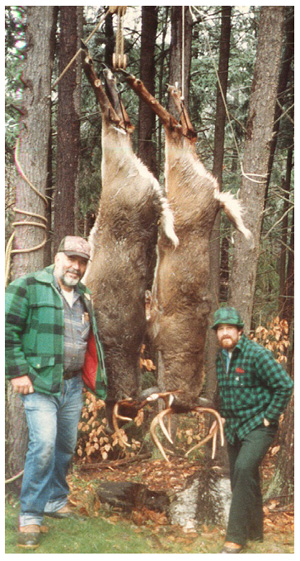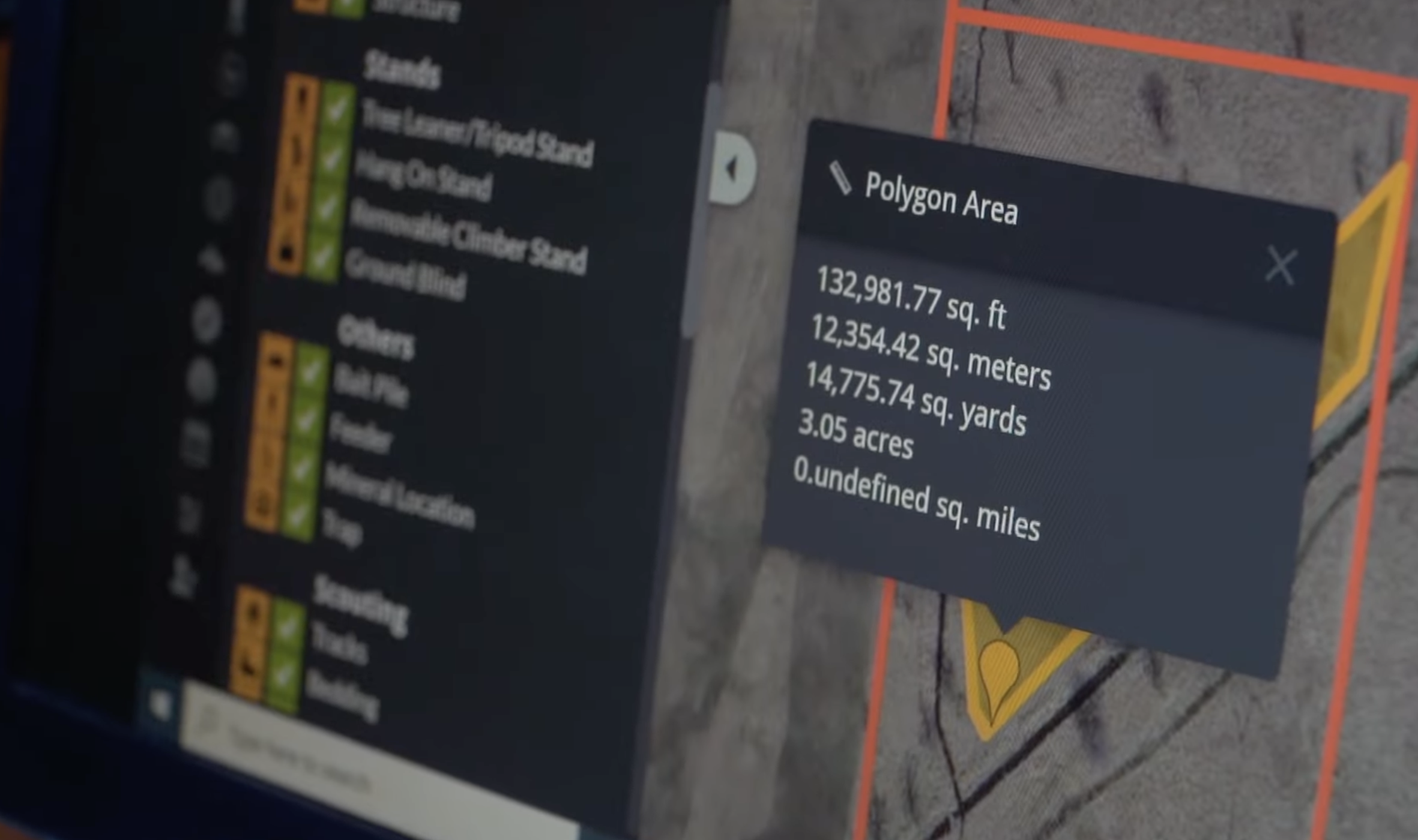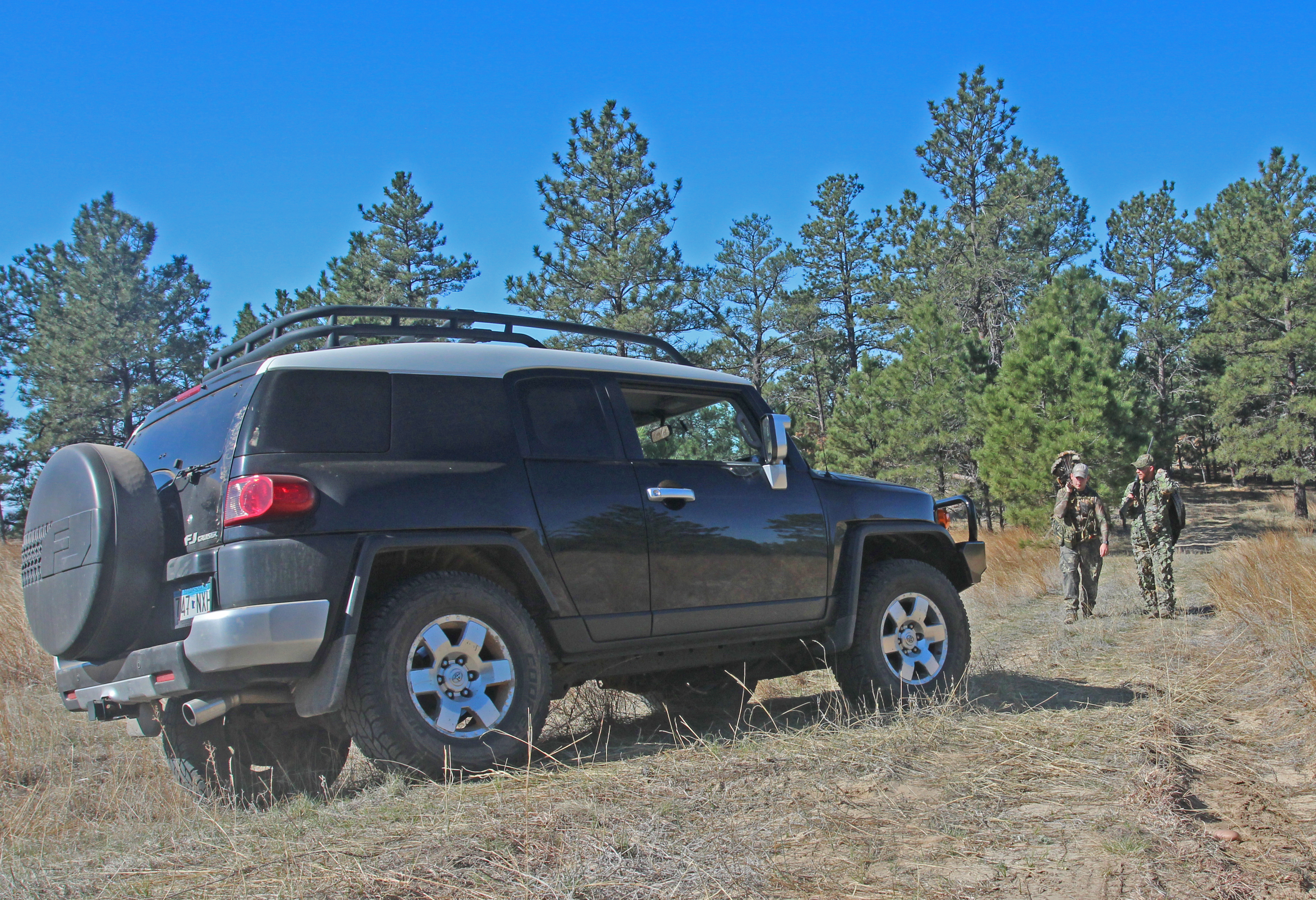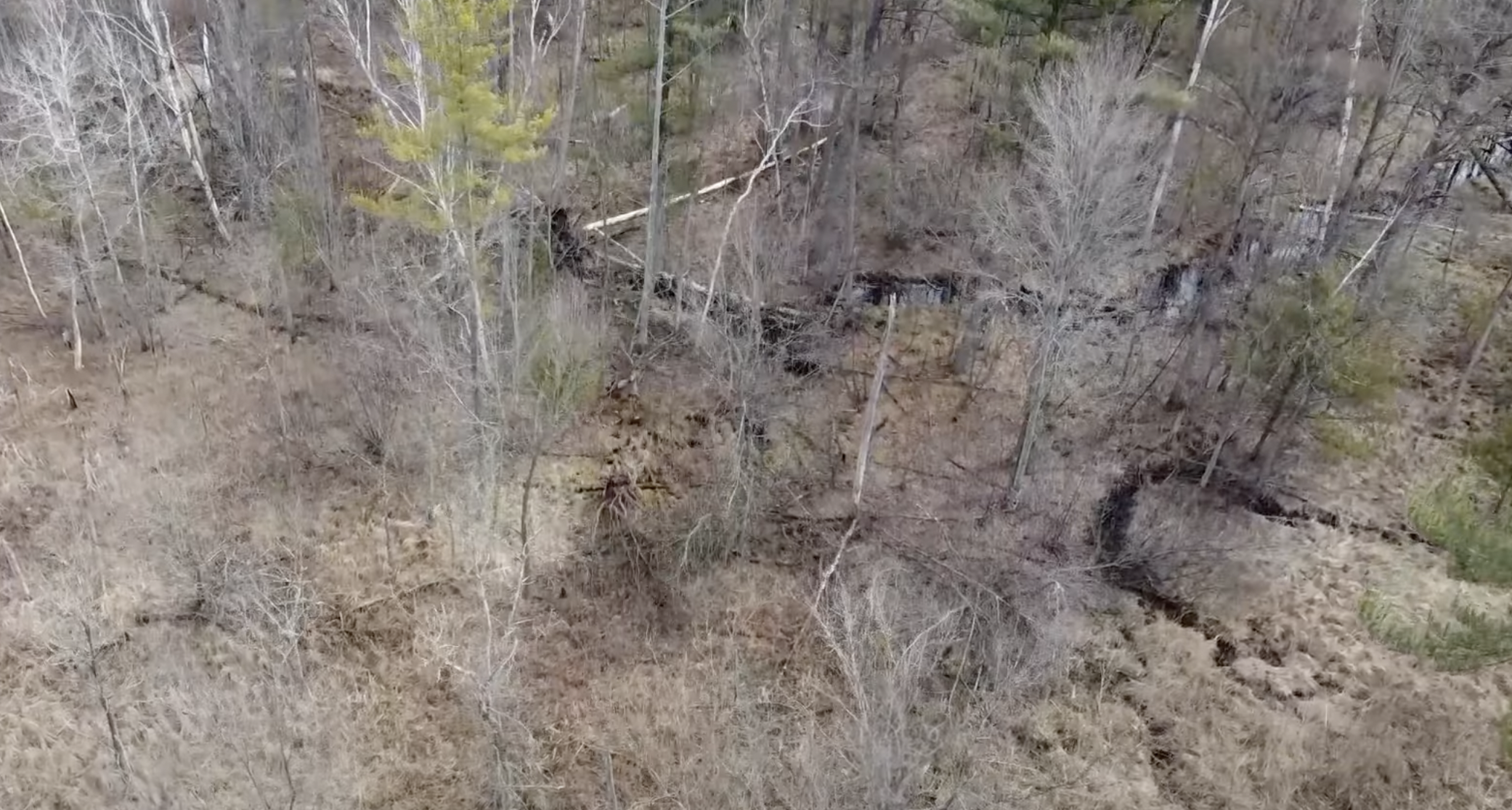Hunting on public land is much like booking a flight in coach instead of first class. Why spend all that extra money to sit in a slightly bigger seat, receive a beverage first and have your pretentious self feel pampered, when the same plane can get you to the same destination for a fraction of the cost?
In case you haven’t noticed, whitetails can’t read posted signs. They have no way of knowing the barriers with which humans separate private from public grounds, and they obviously cannot distinguish which hunter will present the greatest threat to them. I’m convinced that in a deer’s mind, anyone skulking around or hiding in trees within the deer’s domain is dangerous, regardless of the side of the metaphorical fence the hunter happens to occupy.
However, there are usually fewer deer found on public land. The population is thinned each year by hunters, and whitetails possessing below-average evasion tactics are quick to find themselves attached to a drag rope.

The easy route to success on pressured whitetails then, is to find them before the season starts. Get a good idea of where their escape routes are, where they feed and how they get from bedding locations to food sources. Then, when opening day approaches, beat the crowd in the woods. Go to where the deer will be come first light, and march out with your tagged prize.
If you can already manage this and do it routinely, you might not need the advice that follows. However, if you arrive at your destination and can’t find a parking spot, much less a cooperative whitetail, you’ll need these five basic principles to hunt public land successfully.
1. Get the Most of Maps/Compass/GPS
The thought of studying maps doesn’t sound very fun or intriguing, does it? After all, how can anyone predict on paper where, when and if a wild whitetail will show up, especially after the onslaught of other hunters hits the woods? As soon as the first barrage of shots is fired, the pressure is on. To the casual observer, it seems that whitetails spend every waking moment thereafter racing pell-mell in a frenzied attempt to dodge this orange-clad army.
Yet, as we peel back the layers of how deer react to pressure and use their home turf, do hunters really determine deer movement? I would have to agree that the first few hours of opening day on public land resemble a surprise attack on a sleeping village, scattering the inhabitants in all directions. However, when the initial fright has subsided — and the deer have their wits about them — they will adapt to the situation at hand, albeit much more cautiously.

Here’s where knowing the contours of your intended hunting location, such as pinch points, saddles, streams, benches and hubs, will provide you with a decided edge, rather than leave you guessing as to where to position yourself. Taking the time to study maps of your area, understanding how whitetails use topography, knowing what their food source is and discovering where that food source is located will undoubtedly remove much of the guesswork.
Now comes the legwork. There is no substitute for old-fashioned observation. Visit your location before the season and scout promising areas. Each hunt should further the learning process and help you to sort specific locations into areas good for sightings or wastes of time.
When you discover key locations, the way you position yourself in each of these spots will have an effect on whether or not you fill your deer tag. Your compass and GPS will be very useful at this stage.
The direction of the wind on any given day will dictate how and from what direction you should enter the section of ground you wish to hunt. If the prevailing wind foils your original plans, don’t be afraid to change your route and come in from a different direction. If you’ve marked your key locations on your GPS, your direction of approach should not matter. The unit will bring you to that exact spot.
2. Outfox the Competition
Competing hunters, all vying for the same results, congregate on public lands. The sooner you come to grips with this reality, the better off you will be. The woods don’t belong to just one person, and thankfully, anyone who wishes has equal opportunity to hunt there. Learning how to use other hunters to your advantage and being able to predict their movements will add immeasurably to your results, significantly reducing your frustration.
I have used many strategies over the years to avoid competition, some of which have really paid off. For instance, I learned a long time ago that no matter where you attempt to hide your vehicle, someone is going to find it and make the connection. Therefore, I use reverse psychology and park my truck in the most conspicuous location, sure to be seen by anyone traveling that road.
If there’s snow on the ground, I walk into the woods on the opposite side of the road from where I intend to hunt, then meticulously back out on those very same imprints to give the illusion that I’m hunting where I’m not. Afterwards, I’ll scurry up the hard pack of the road, being careful not to leave any sign of my passing. When I get to a convenient stream crossing under the road, I jump in and walk it for a few hundred yards before emerging. This little ploy, conducted before morning’s first light, has provided me with areas all to myself, without fear of someone else honing in.

I’ve also driven around the area after sunup to see where the competitors’ vehicles are parked. Hunters have a tendency to be habitual and will park in the same locations day after day. Knowing the direction of these other hunters’ approaches gives me the ability to use them to push deer my way.
When hunting public land, it is no longer enough to pattern the whitetails. The conscious hunter must also “pattern” other hunters and predict, by the other hunters’ actions, what they are going to do.
3. Off-Peak Rates
Seasonal businesses, airlines and hotels offer special rates at certain times of the year in an attempt to entice customers with reduced rates during off-peak times. Besting the competition on public grounds doesn’t necessarily mean being the first to arrive. Parking your truck before anyone else arrives is no guarantee that you won’t have company, and if people know whose vehicle is parked there, the knowledge might encourage them to join the party.

Although it has been said that, “the best time to hunt is anytime you have the opportunity,” sometimes it is better to wait until the crowd has thinned. In most instances, short of opening day, weekends and holidays, the woods are free of hunters. By adjusting your hunting schedule so you can hunt on weekdays, you can improve your chances of avoiding other hunters. After a few days, the resident deer have had a chance to relax from all the human pressure, and their travel patterns will revert back to normal. This alone allows you to maximize the information you derived from maps and scouting.
I firmly believe you have a better chance at killing a mature buck by exercising patience and prudence rather than rushing in and tipping off others. Trust me, if you’ve gained a reputation as a bruiser hunter, everyone will know why you’re parked at your favorite location.
4. Take the Path Less Traveled
Whether it comes as a byproduct of our culture, general inertia or the thought of an easy kill, the majority of today’s hunters will seldom stray any farther than a quarter mile from their parked trucks. Upon initial inspection, deer sign will be prevalent, and some fortunate hunters will even kill deer that close to the road, at least during the first few days of the season.
As pressure mounts, the deer will be quick to retreat. However, they will only go as far as necessary to avoid detection. A hunter’s reluctance to penetrate deeper into the woods at this point will keep him from finding the relocated deer. Whitetails don’t formulate strategies to evade danger; they simply adjust to the pressure and gravitate toward locations free of human intrusion.

This retreat doesn’t necessarily mean they will head for the most remote locations. In fact, unless pressured from all sides, this is seldom the case. Therefore, if we are quick to distinguish how far most of our competitors are willing to go, and where the topography best suits the resident whitetails farther back, we may find success in areas other hunters don’t consider.
5. Be a Sneak
Evasiveness is not the same as lying. If someone asks where your best hunting locations are, you are under no obligation to answer.
Hunters, as a group, enjoy sharing our triumphs. When we kill a real slammer, the attention the feat gains only intensifies the desire. We just can’t help ourselves.
Often, a fortunate hunter topples a massive buck, only to find his area inundated with hunters looking to duplicate the feat the following year. Remain under the radar. Ask yourself if it’s really worth bragging when, as a result, you might lose your favorite hunting spot.
When you kill your buck on public lands, don’t take the easy route while dragging out your prize. Haul him out to an inconspicuous location, leave him hidden in the bush and retrieve him when the coast is clear, even if it isn’t until after dark. Practice as much evasion as the whitetail to protect your prize hunting location.
Conclusion
Hunting on public land has many obvious drawbacks and perceived downsides. However, public land still teems with whitetails and provides free opportunities to all who care to penetrate its borders. By applying these five basic principles to your desire to succeed, your chances are as boundless as the deer you pursue.
— R.G. Bernier was an expert big-buck hunter from Maine and a field editor for D&DH for many years.
D+DH In-Depth is our premium, comprehensive corner on America’s No. 1 game animal. In this graduate-level course, we’ll teach you about deer biology, behavior, and ultimately, how to become a better hunter. Want to be the first to get our premium content? Become a D+DH Insider for FREE!












































